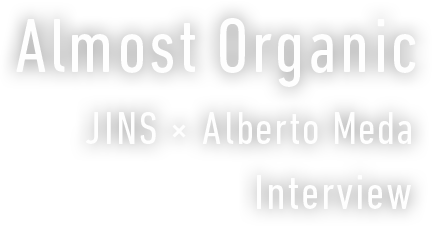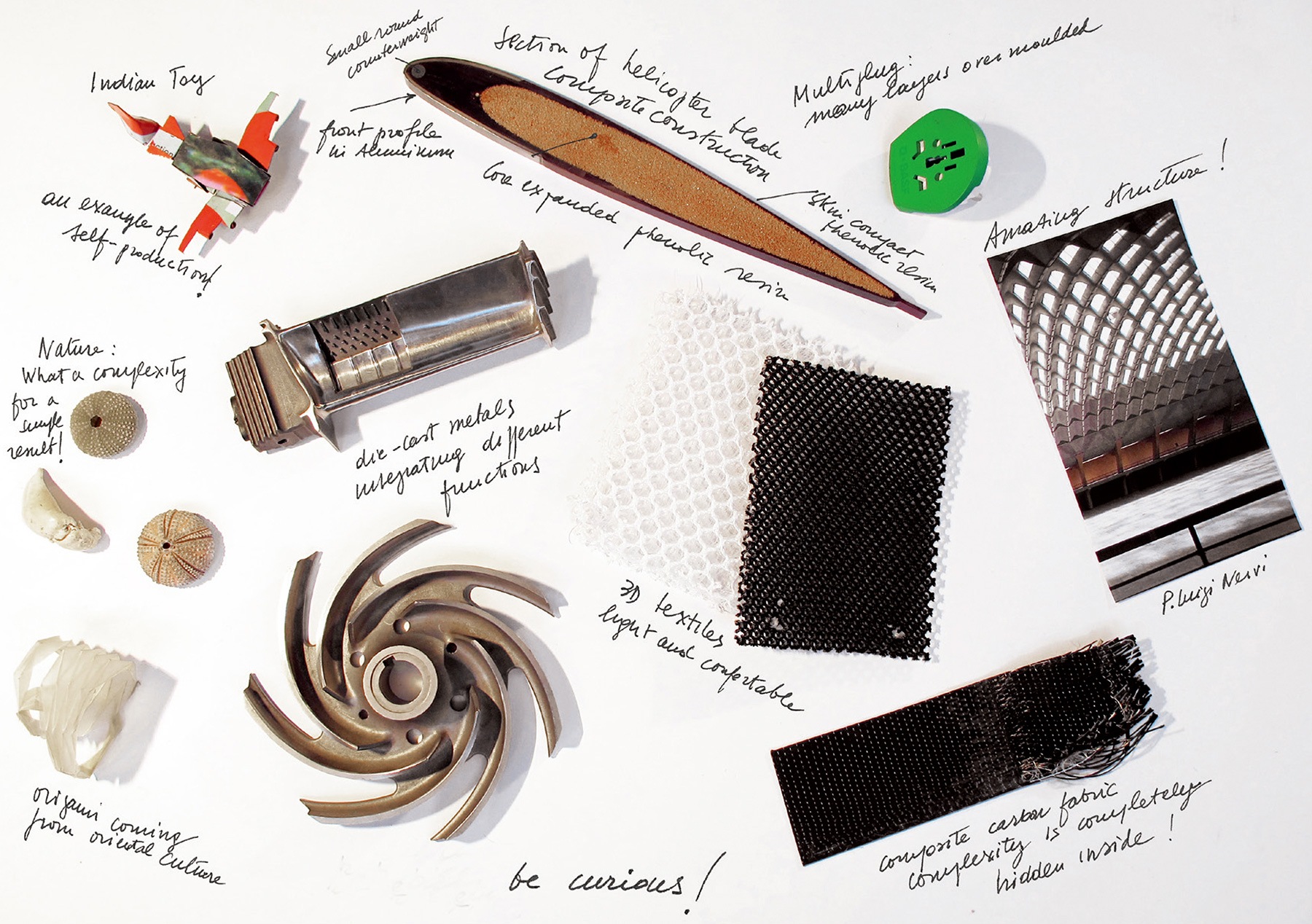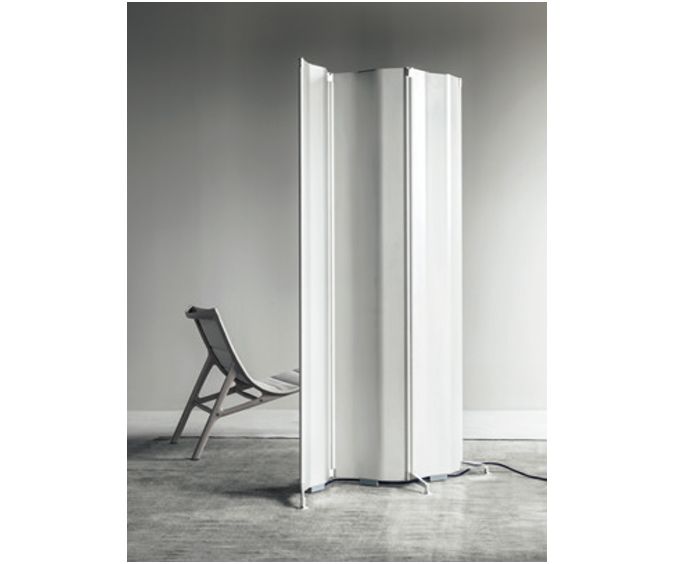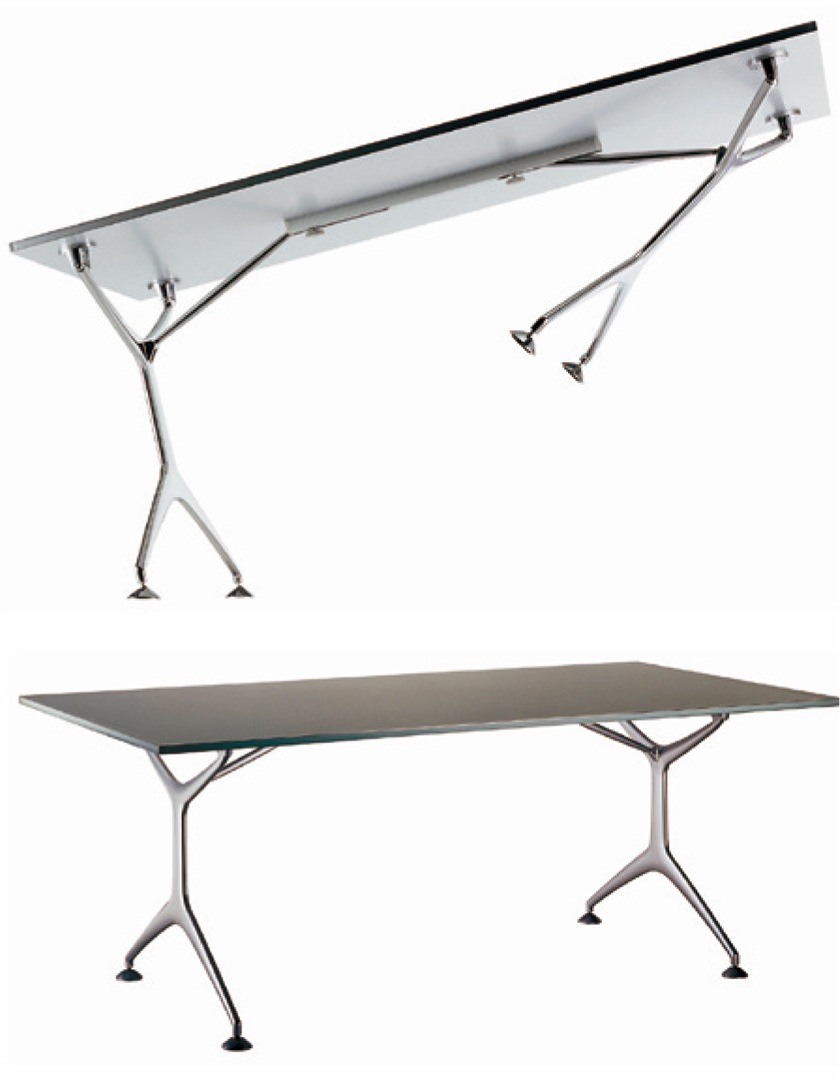



Innovation in Eyeglasses



When a new project is launched, I always think about how to combine exiting elements to create a new connection and/or an innovation, obviously provided it is useful. To innovate, we must take a look at the existing, as it would be silly and presumptuous not to have a reference, but with a “cross-eyed” look, that is, with an unconventional, non-conservative point of view. Ideas are born in an unexpected way, but they can be stimulated by an experimental attitude, by curiosity towards innovative technology and materials, by the ability to transfer, contaminate and graft even distant knowledge and integrating them. I always start from a constructive idea and not from a fixed formal repertoire, and during the development, the idea is put in shape, relying on a physicality, a material or a technique. But the form does not exist at the beginning. It reveals itself along the way.

Thus, at the beginning, my JINS design was not merely about creating the shape of the eyeglasses. Right from the start, JINS cited “comfortable” as a keyword. I was also interested in the fact that the use of metal materials was part of the framework of the project: the use of aluminum and titanium. With aluminum, it is possible to achieve a truly light structure, either by die-casting or by machine cutting. Titanium, light and flexible, is a material that lends itself to modern technology, such as laser cutting, enabling surprisingly lightweight and flexible products to be created. I also wanted to explore the possibility of combining the metal materials with other materials.

The “almost organic” design to create simple objects


I thought that the use of aluminum and titanium could have given a positive answer to the idea of comfort, because both materials are light and able to integrate functions with the result of creating simple objects with an “almost organic” unitary image.
With “almost organic”, I do not mean an organic form. What I mean is that the components that make up the eyeglasses are organically connected. This is how nature works, as it entrusts several different functions to the same organ.


Take, for example, the hinge part that connects the front section and the temple section. The flow of the entire form is interrupted once at the hinge part, but, while retaining the relevance of the relationship between the two sections, I tried to find a way of making the image as continuous as possible. The hinge itself is made using the latest technology. The process includes complex techniques, but such complexities are not shown. State-of-the-art technology should be used as a means to achieve simplicity. As a result, the product becomes more user-friendly with a light quality. Since eyeglasses are worn on the face, being light is important with regard to two aspects. While they should be physically lightweight, it is particularly important that the eyeglasses look light and discreet.
Design is exploring “good relations”
To seek "almost organic" is to explore "relations".
I believe that "good relations create good ideas".
There are many kinds of relationships and there are limitations that arise from all of them, but it is the essence of design to consider a range of relationships from fine details to broader perspectives.
It was in the spring of 2016 when JINS approached me with a talk of the project, and by July, my son Francesco and I had created a prototype of the hinge with a 3D printer at my studio in Milan. It was an important step, because, by testing the relationships of the details, we were able to understand whether the idea would really work. Examination of prototypes frequently exposes certain issues, and demonstrates that the design process is not linear, the shape is not given 'a priori' as a ready-made language, and the shape rather derives from the cycle of thinking-and-doing.
That's how I conceive a design, which gradually takes shape, following the research work from the idea to the final product, made of proven thesis, refinements and tuning, second thoughts, negations, and new unexpected solutions.
What was outstanding about working with JINS was that the staff always responded carefully and precisely to every particular detail: for instance, JINS suggested, "it would look even lighter if the temples were made slimmer when viewed from the side".
The same could be said about coloring. The coloring of eyeglasses is a rather delicate matter and even when selected from a color palette, the color of an actual product might not quite work.
After careful research, the coordination of colors for each design was made possible, because of JINS' high-level technical skills. Rather than giving the impression that the metallic materials were painted, colors that enhanced the properties of each material were used to produce elegant results.
Many unexpected issues can arise during a project. Finding solutions to them is one of the thrills of a design project, but it is vital to have a good partner with whom you can work.

Alberto Meda's Point of View : Innovation and Lightness

I am interested in materials and technology as well as innovation in science.
I am also interested in architectural design and contemporary art. In the field of architecture, I find experiments on structures intriguing, and I am drawn to abstract art, which depicts things that cannot be expressed in words.
Fausto Melotti and other artists are also engaged in the "lightness" that I value. The architect, Gio Ponti also portrays airiness as something of visual and esthetic value. I am often inspired by works from these other fields as well.
It is, however, true that the reason I might have a thing about "lightness" is because my first project as a designer was lighting fixtures. Lighting fixtures control light, but light is intangible and immaterial. It is essential that lighting fixtures are simple and light, or otherwise a contradiction would arise with the immateriality of light. This experience has created a major paradigm in my designs.

"ORIGAMI" by Tubes is foldable and, as well as its electric heating function, offers a psychological dimension of providing privacy. In 2018, it won the Italian Compasso d'Oro Award for excellence in design.
"Origami" can be used both on the floor or as a wall-mounted appliance. A wet towel can be dried by sandwiching it as in a toaster. It is made of extruded aluminum, and is available in several different heights.
"Step by Step" radiator, two versions, hydraulic and electric, by Tubes.
Step-by-Step starts from an aluminum module with a surface made of pleated elliptical elements, tilting towards the left or the right. Depending on their layout and on the observer's perspective, charming games of light can be created, as well as visual effects.
Modularity makes Step-by-Step suitable for the most diverse design requirements. The basic module can be installed individually or placed beside another module, thereby creating four configurations: one or two modules tilting towards the right, one or two modules tilting towards the left.
The relationship between design and engineering, and the relationship between design and society


Regarding relationships, the relationship between design and society must not be forgotten either. I not only carry out projects with business enterprises but, for instance, I am also involved in a project on solar bottles for drinking water where safe water is not available.
I do not think that design alone can solve the issues of the world. But design can have a tremendous impact, because design supports progress and enables people to really use scientific and technological innovations. It is like a chain --- from science and technology, the application of science, to the design with its competency to develop solutions that fit human experience and human perception.
However, we should remember that there is an enormous paradox regarding technology. The latest technology does not necessarily contribute to solving our day-to-day issues. What is important is to recognize what the problem or issue is and what is needed, and then to put forward appropriate insights and knowledge. Surely it is the mission of those involved in design to deal with their subjects in this way.
Products like "JINS SCREEN", which blocks blue light, and "JINS MOISTURE", which has a tremendous moisturizing effect, show that the means of enhancing the quality of the health and daily lives of those who wear eyeglasses are an integral part of JINS' creations.
Working on this project with people who embrace such passion was a productive experience and filled me with far more joy than I had imagined.

I am happy with the results of every single one, from "UNO" to "QUATTRO". Which one would I want to use first? …… No, I can't just choose one! (laughs) First, I'd take "Meda QUATTRO" for reading. I'd like to try "Meda UNO", which has the coloring finish I love the most, for working on my computer.

